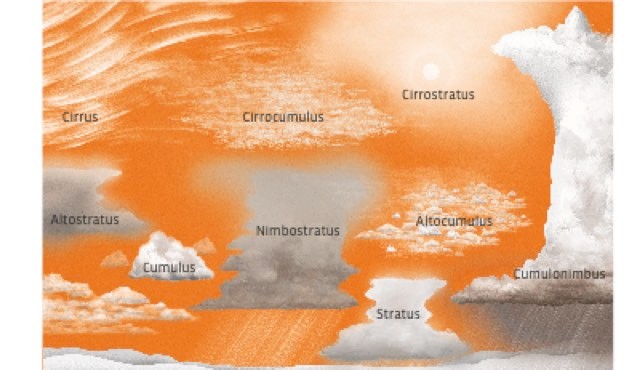Why are there two layers of clouds?
Asked by: Shiri Kleinberg, London
A cloud is born when humid air rises in the atmosphere. As temperature and pressure drop, water vapour carried in the air condenses into tiny water droplets or ice crystals to create a cloud.
The height at which a cloud forms depends on the temperature and pressure of the air, as well as how much water it contains. The World Meteorological Organization classifies clouds into three broad categories according to altitude, but there is considerable overlap as clouds can be very tall.

Clouds whose bases lie at altitudes below 2km are considered low-level clouds. These are formed of mostly liquid water droplets, with common types including ‘cotton wool’ cumulus and featureless, sheet-like stratus. Mid-level clouds sit between roughly 2km and 7km and include vast blankets of altostratus or clumpy altocumulus. (Their water can be liquid or ice depending on the altitude.) High-level clouds have a base above 5km and are made of ice crystals, giving rise to thin, translucent clouds like wispy cirrus.
Read more:
- How do large clouds stay in the air if they can weigh tonnes?
- Why are some clouds flat underneath?
- Why are clouds white?
- Is there life in clouds?
Authors
Sponsored Deals

May Half Price Sale
- Save up to 52% when you subscribe to BBC Science Focus Magazine.
- Risk - free offer! Cancel at any time when you subscribe via Direct Debit.
- FREE UK delivery.
- Stay up to date with the latest developments in the worlds of science and technology.




